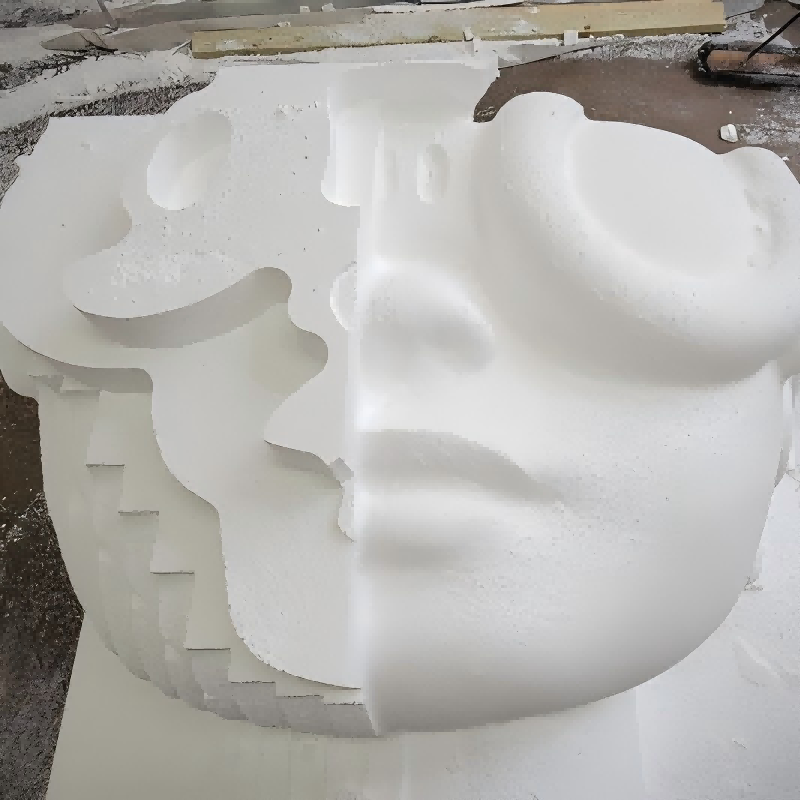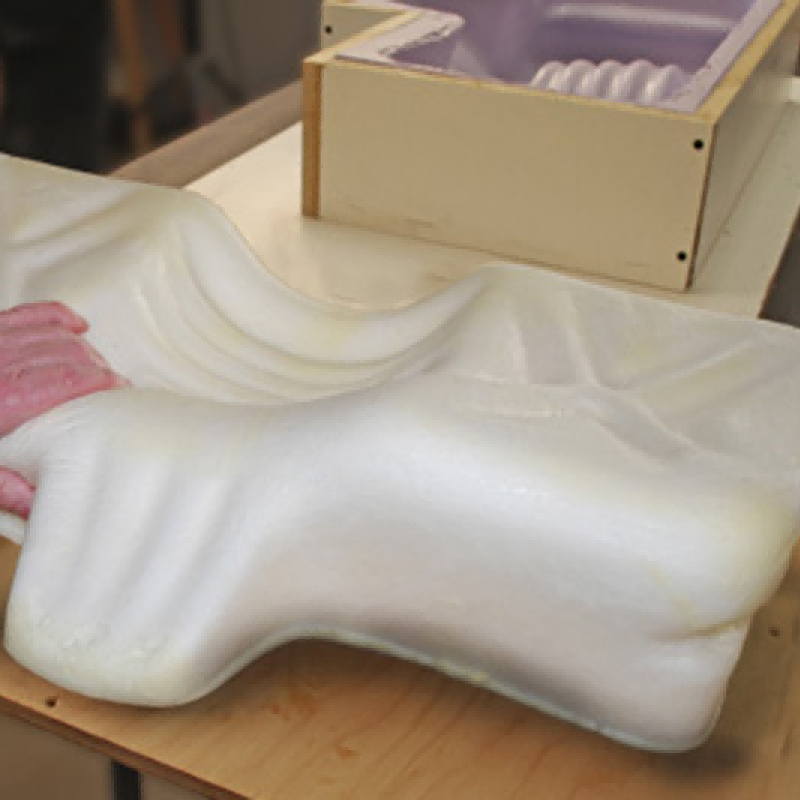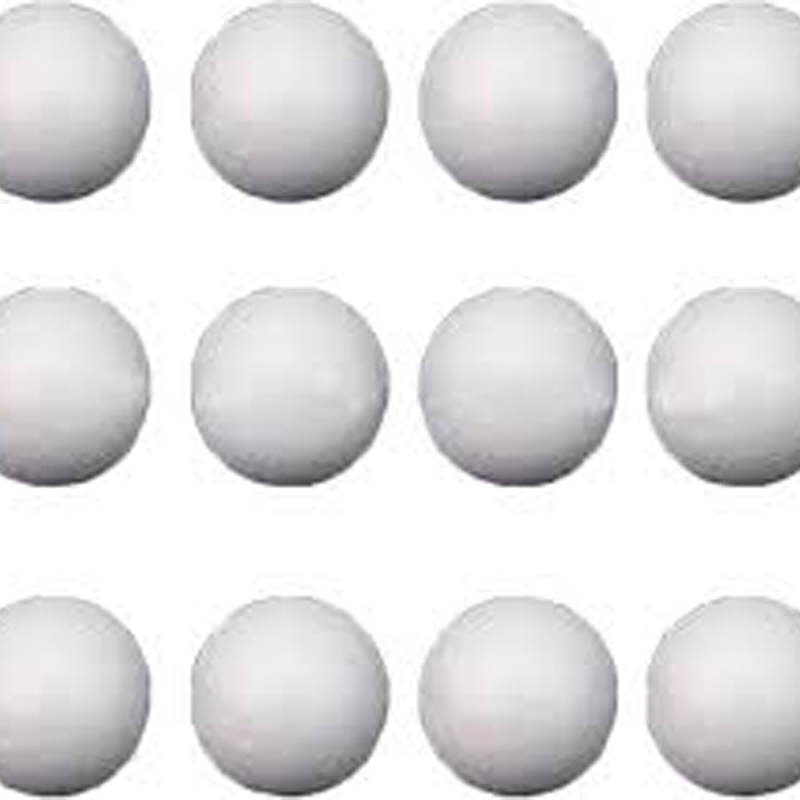Introduction to the concept of foam mold smoothness

Foam molds play a vital role in industrial production, especially in the manufacturing process of foam products.
Foam molds are usually made of specific materials, such as cast aluminum, etc., and are used to process foam raw materials into products of various shapes and sizes.
Smoothness plays an extremely important role in foam molds. A foam mold with good smoothness can produce foam products with smooth surface and high quality.
This not only gives people a beautiful appearance, but also has an important impact on the performance of foam products.
For example, in some fields with high precision requirements, such as electronic product packaging, precision instrument protection, etc., the surface smoothness of foam products is directly related to the protection effect and use experience of the product.
From the perspective of production technology, the smoothness of foam molds is closely related to the processing process of molds.
In the process of mold processing, precise control of dimensional accuracy, selection of suitable mold materials, uniform mold wall thickness, and precise production of templates all affect the smoothness of the final mold.
At the same time, strictly mastering the foaming process parameters, doing a good job of trimming and polishing, and strengthening equipment maintenance and maintenance will also help improve the smoothness of foam molds.
According to relevant data, the smoothness of commonly used papers is from high to low: coated paper, offset paper, letterpress paper, and newsprint.
Although foam molds are different from paper, this example also indirectly illustrates the difference in the importance of smoothness in different materials and products.
For foam molds, the smoothness requirements vary depending on the specific application scenario, but in general, higher smoothness often means better product quality and performance.
The smoothness that the foam mold should have

1.Considerations for different uses
There are significant differences in the smoothness requirements of foam molds in different application fields.
In industrial production, foam molds are usually used to manufacture electronic product packaging, automotive parts, etc.
These products have high requirements for precision and appearance quality.
For example, electronic product packaging requires foam molds to be extremely smooth to prevent scratches or damage to electronic products during transportation and storage.
In this case, the surface smoothness of the foam mold may need to meet certain industry standards.
For example, the surface roughness value of the mold parts is between 0.4 – 0.8 μm to ensure that the surface of the foam products produced is smooth and can be used for electronic products. Provides good protection.
In the field of artistic creation, the smoothness requirements of foam molds are relatively low.
Artists often use the plasticity of foam materials to create sculptures.
At this time, the surface of the foam mold may retain some hand-made traces to increase the artistic feel of the work.
For example, in the creation of foam sculptures, artists may deliberately create some texture or uneven effects on the surface of the mold to achieve a specific artistic effect.
Therefore, the smoothness of foam molds in artistic creation depends more on the artist’s creative intentions and aesthetic needs.
2.Industry standards and actual needs
There are certain standards in the industry for the smoothness of foam molds.
For example, during the processing of foam ship model molds, the surface roughness of the mold is required to be as low as possible to ensure that the copied foam ship model has an accurate shape and a smooth surface.
At the same time, different types of foam materials will also affect the smoothness of the mold.
For example, in the production of PVC foam boards, if the surface of the mold is not smooth, it will cause the surface of the board to be rough and affect the product quality.
Therefore, for PVC foam board molds, the smoothness requirements are relatively high to ensure that the surface of the produced boards is smooth and flat.
However, in actual production, various situations may affect the smoothness of the foam mold.
For example, factors such as the selection of mold materials, the stability of the processing technology, and the maintenance of the equipment may cause changes in the smoothness of the mold.
If the selected mold material has insufficient durability and heat resistance, it may deform due to temperature changes during the foaming process, thus affecting the smoothness of the mold.
In addition, if the process parameters are not properly controlled during the processing, such as inaccurate foaming time or temperature, it may also lead to insufficient expansion or insufficient hardness of the foam material, thereby affecting the surface smoothness of the mold.
In actual production, companies need to comprehensively consider various factors based on specific production needs and actual conditions to determine suitable foam mold smoothness requirements.
Factors affecting the smoothness of foam molds

1.The role of material properties
The properties of foam materials have a crucial impact on the smoothness of molds.
First, the texture of the material is a key factor. If the foam material is rough, it is easy to leave marks on the mold surface during the mold forming process, reducing the smoothness of the mold.
For example, some low-quality foam materials may contain impurities or large particles, which will scratch the mold surface when in contact with the mold, resulting in an uneven mold surface.
The density of the material will also affect the smoothness of the mold.
Generally speaking, foam materials with higher density are more stable during the molding process, and the pressure distribution on the mold is more uniform, which helps to improve the smoothness of the mold.
According to relevant research, the density of rigid PVC foam sheets is closely related to performance.
As the density increases, the mechanical properties show a linear growth trend, and the heat deformation temperature also increases slightly.
This means that within a certain range, choosing a foam material with higher density can improve the smoothness and stability of the mold.
In addition, the flexibility of the foam material will also affect the smoothness of the mold.
Foam materials with good flexibility are easier to fit the mold surface during the molding process, reducing the generation of bubbles and gaps, thereby improving the smoothness of the mold.
However, if the foam material is too soft, it may deform during the demoulding process, affecting the reuse of the mold.
2.The influence of the manufacturing process
The influence of the manufacturing process on the smoothness of the foam mold cannot be ignored.
The processing method of the mold is one of the important aspects. For example, the use of precision machining technology can significantly improve the smoothness of the mold.
Precision machining technology can achieve zero-error machining, so that the mold surface has high finish and smoothness, thereby ensuring the smooth surface of the produced foam products.
In the mold processing process, the selection of suitable processing equipment and tools is also very critical.
Different processing equipment and tools have different cutting effects on the mold surface, which will directly affect the smoothness of the mold.
For example, the use of advanced CNC machining equipment can accurately control the machining parameters, improve machining accuracy, and reduce the roughness of the mold surface.
Surface treatment is another important process that affects the smoothness of the mold.
Through surface treatment methods such as polishing and electroplating, the tiny defects on the mold surface can be removed and the surface finish and smoothness of the mold can be improved.
For example, in injection mold manufacturing, precision polishing technology is an important process.
It removes tiny defects on the mold surface to achieve the ultimate smoothness of the mold surface, which not only improves the touch of the product, but also optimizes the interaction between the mold and the plastic, reduces the defect rate in the production process, and improves the product yield rate.
In addition, the control of foaming process parameters also has an important impact on mold smoothness.
Strictly controlling parameters such as foaming time and temperature can ensure that the foam material is fully expanded and evenly distributed in the mold, reducing the generation of bubbles and unevenness, thereby improving the smoothness of the mold.
If the foaming time or temperature is not properly controlled, the foam material may not be fully expanded or the hardness is insufficient, which will affect the surface smoothness of the mold.
The importance of smooth foam mold

1.Improve product quality
Smooth foam molds play a vital role in improving the quality of the final product.
First of all, in terms of appearance quality, a smooth foam mold can produce foam products with smooth surfaces and flawless surfaces.
In some fields that have high requirements on appearance, such as high-end electronic product packaging, luxury packaging, etc., the appearance of products directly affects consumers’ purchasing decisions.
For example, if a high-end mobile phone is packaged using a smooth foam mold, the foam padding inside the package will have a smooth surface without any unevenness or scratches, which can give consumers a high-quality visual experience and enhance the quality of the product. Overall grade.
In terms of performance, smooth foam molds also have significant advantages.
For some products that require a tight fit, such as protective foam for precision instruments, a smooth mold can ensure a higher degree of fit between the foam product and the instrument, providing better protection.
According to statistics, in precision instrument protection foam produced using smooth foam molds, the rate of instrument damage caused by improper protection is reduced by more than 30%.
In addition, smooth foam molds can also reduce the friction coefficient of foam products during use and improve the wear resistance and durability of the product.
2. Improve production efficiency
Smooth foam molds can effectively reduce defects and rework during the production process, thereby greatly improving production efficiency.
When the mold surface is smooth, the foam material can be more evenly distributed during the molding process, reducing the occurrence of defects such as bubbles and cracks.
This means that significantly less tinkering and rework is required during production.
According to statistics from relevant companies, using smooth foam molds for production can increase the first-time pass rate of products by 20% to 30%, thus saving a lot of time and labor costs.
In addition, smooth molds can also improve the operating efficiency of production equipment.
Because the foam material flows more smoothly in the smooth mold without clogging or jamming, production equipment can run faster.
For example, in a foam board production line, using smooth molds can increase production speed by 10 to 15 percent.
At the same time, smooth molds are easier to clean and maintain, reducing equipment downtime and further improving production efficiency.
Summary and Outlook
The smoothness of the foam mold plays a vital role in the production of foam products.
Whether it is improving product quality or improving production efficiency, it has an impact that cannot be ignored.
From the perspective of different uses, the requirements for the smoothness of foam molds in different fields vary significantly.
In industrial production, especially in fields such as electronic product packaging and automotive parts manufacturing, extremely high smoothness is required to ensure product accuracy and appearance quality.
In the field of artistic creation, smoothness depends more on the artist’s creative intention.
Industry standards provide a certain reference for the smoothness of foam molds, but in actual production, various factors will affect the smoothness, and companies need to consider comprehensively to determine appropriate requirements.
Factors affecting the smoothness of foam molds mainly include material properties and manufacturing processes.
The texture, density and flexibility of the material all have an impact on smoothness.
High-quality, moderately dense and flexible foam helps improve mold smoothness.
In terms of production technology, precision machining technology, appropriate processing equipment and cutting tools, surface treatment and control of foaming process parameters can significantly improve the smoothness of the mold.
Smooth foam molds can not only improve product quality, make the product smooth and flawless in appearance, improve performance, but also improve production efficiency, reduce defects and rework, and improve equipment operating efficiency.
Looking to the future, with the continuous advancement of science and technology and the continuous improvement of the quality requirements of foam products in various industries, the smoothness of foam molds will receive more and more attention.
In terms of materials, we develop higher-quality, high-performance foam materials to meet the needs of mold smoothness in different fields.
The production process will also be continuously innovated and improved, such as using more advanced processing technology and equipment, optimizing surface treatment methods, and accurately controlling foaming process parameters to improve the smoothness and stability of the mold.
At the same time, future research directions can further explore the relationship between different material properties and manufacturing process parameters, and establish a more scientific foam mold smoothness evaluation system.
Strengthen the research on the performance of foam molds in complex application scenarios, such as smoothness changes in special environments such as high temperature and high pressure.
In addition, intelligent technology can also be combined to realize real-time monitoring and adjustment of the smoothness of the foam mold, improving the controllability and stability of the production process.
In short, the smoothness of foam molds is an important research topic and is of great significance for promoting the development of the foam products industry.
